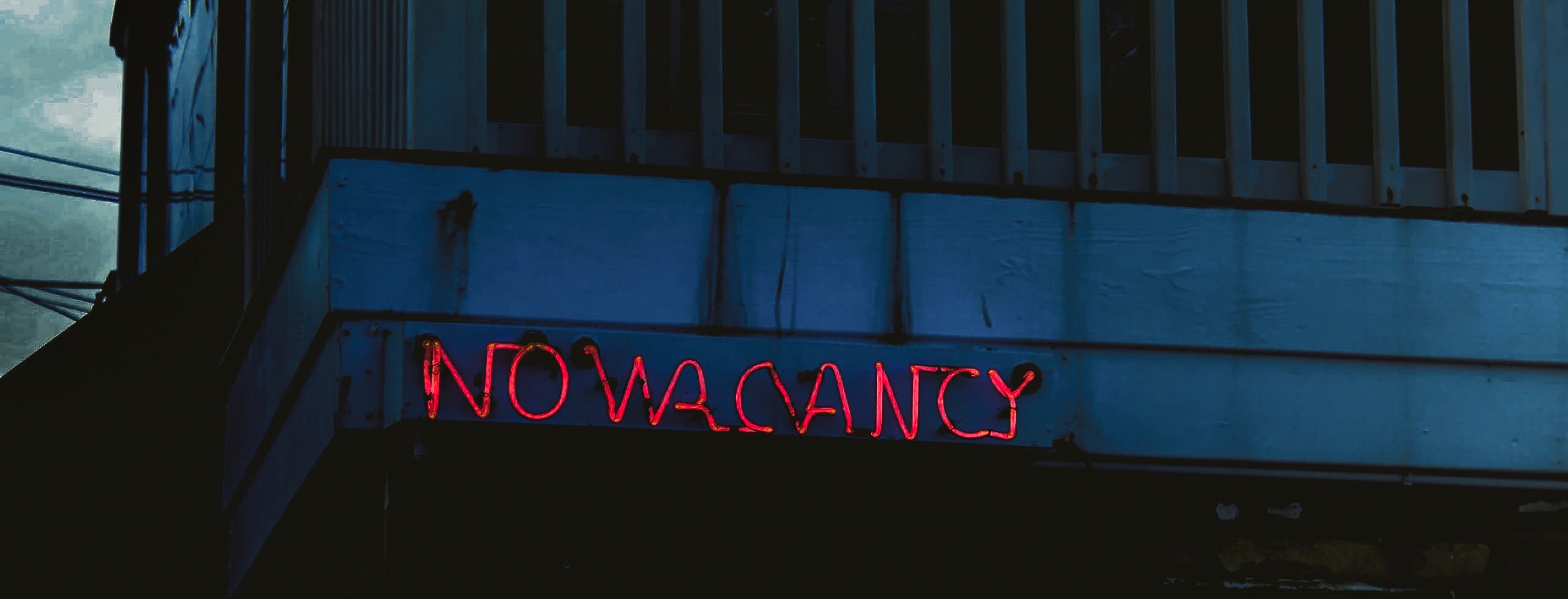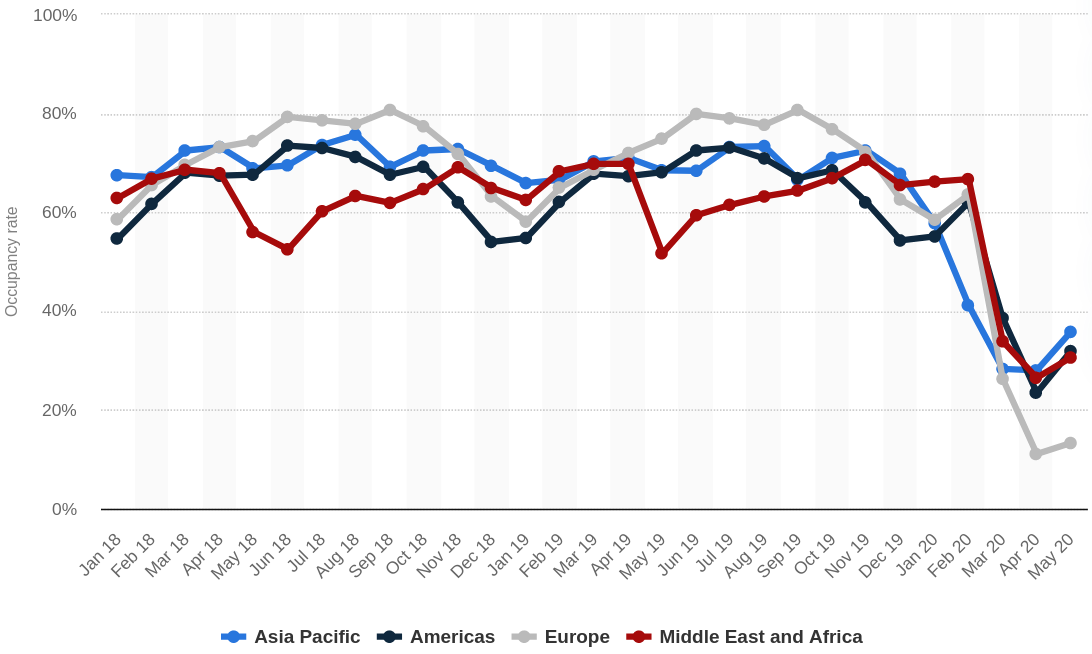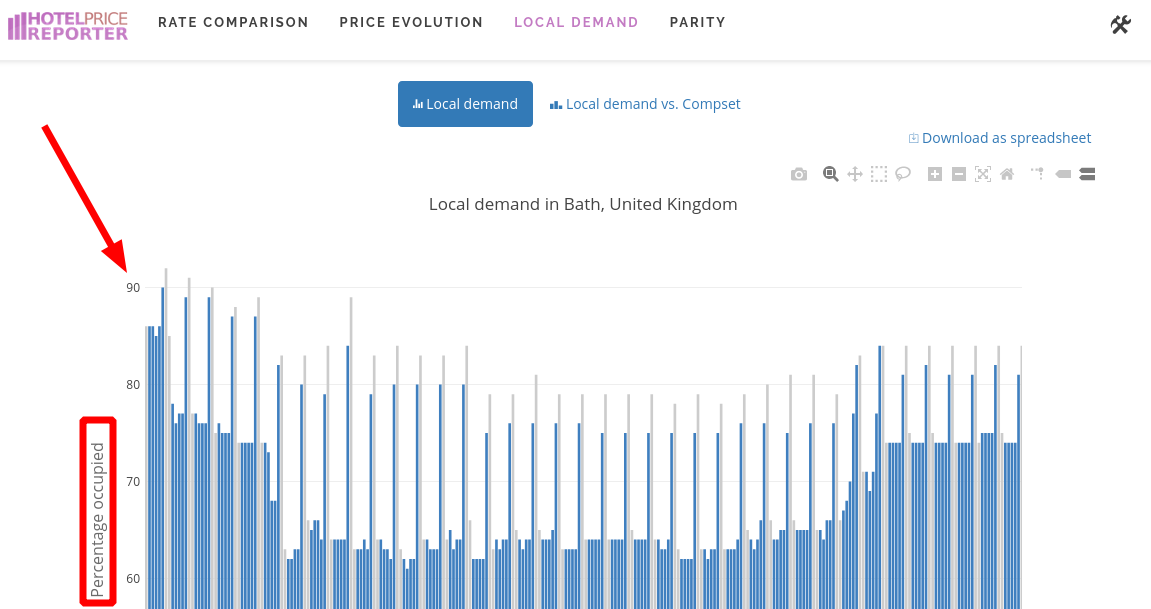What is a good occupancy rate for a hotel?

If I were to tell you that last night at our hotel we had 100% occupancy, what would you think?
Maybe 100% occupancy sounds like a lot based on what experience you have with your own hotel. Maybe 100% occupancy sounds like something that happens often at your establishment.
Looking at raw occupancy rates like this, free of context, makes it quite hard to draw any concrete conclusions.
One way of benchmarking occupancy is by looking at your occupancy statistics and income stream, side-by-side.
But first, let’s look at what occupancy rate is.
What is occupancy rate?
Occupancy rate is the percentage of the hotel’s rooms sold last night. It is calculated by dividing the total number of rooms occupied by the total number of rooms in the hotel.

Example: If a 100-room hotel sold 80 of its rooms last night, it would be 80 percent occupied. So it would be said that the occupancy rate was 80 percent.
Is occupancy rate the most important KPI?
Not at all.
Two decades ago, hotel salespeople were given a set of targets to meet based upon the total number of rooms they needed to sell. If they met their targets, they were awarded with a bonus. These bonuses were based on how far they exceeded their booking goals, which were expressed as a percentage of rooms occupied.
The industry has come a long way since then however.
Since the early 1990s, hotels started shifting their focus away from occupancy rates and more towards a measurement known as RevPAR.
RevPAR stands for revenue per available room. It is calculated by dividing the actual room revenue by the number of rooms available.
Another important statistic we should mention is ADR, which stands for average daily rate. ADR is calculated by dividing room revenue by the number of rooms sold.
For example, if the hotel generated $8,000 in room revenue last night and it sold 80 rooms, this means that the average rate per room was $100.
As every hotel is in business to make a profit, looking at occupancy rate alone is not enough.
With today’s overdeveloped distribution channels, anyone can get a 100% occupancy by simply discounting prices. Therefore, it is important to look at the occupancy rate together with any of the metrics that take revenue into account.
RevPAR is one metric that we like to use as a good indicator of the hotel’s overall performance.
To calculate your own hotel’s RevPAR you can use a RevPAR calculator.
What are the average hotel occupancy rates over the years?
For the most part, between 2015 and 2019, global hotel occupancy rates have remained anywhere between 50% and 80%, covering all seasons. However, things are not as good in 2020 as a result of the coronavirus pandemic (COVID-19). The hotel industry has taken a serious hit beginning in February 2020. In May 2020, the hotel occupancy rate in Europe saw the most dramatic effects of the virus, with occupancy rates as low as 13.3% (a staggering drop of 82.3% compared to the same period in the previous year).
The graph below from Statista shows the monthly hotel occupancy rates worldwide covering 2018, 2019 and 2020, in the U.S., Europe (including the UK) and Asia.

What is a good occupancy rate?
A good occupancy rate is the one that brings in the most revenue.
There are no hard and fast rules when it comes determining the best occupancy rates for your hotel. What is good for your hotel, may be not good for another hotel. And vice versa.
Finding out what is good in your case will inevitably require some experimentation.
Best place to start is to look at the occupancy rate in your locality.
How to find hotel occupancy rates in your area
You can find the local occupancy rates in your area in the Hotel Price Reporter dashboard. Navigate to the Local demand tab, to get day-by-day occupancy rates displayed as percentages for the local area.
You can also download this data as an Excel spreadsheet by clicking on the Download link.

Ways to experiment with the occupancy rate
To find out what works best for your hotel, you can perform a small experiment.
Step 1 - Achieve the average occupancy rate in your area
Once you know the average occupancy in your area, you should aim to reach it for a start. The easiest way to do so, is by adjusting your room rates accordingly.
If you are below the average, decrease your room rates slightly. Conversely, if you are above the average, increase your room rates slightly.
The aim of this step is so to find out what the possible revenue outcome is for the average occupancy.
Step 2 - Decrease the average occupancy by 5%
The easiest way to do this is by increasing your room rates.
Once you reach the target occupancy, take note of the revenue achieved for the period.
Is the income growing? If so, repeat Step 2.
Is the income decreasing? Go to Step 3.
Step 3 - Increase average occupancy by 5%
The easiest way to increase the occupancy rate is by reducing your room rates.
Once you reach the target occupancy, take note of the income for the period.
If the income is growing, repeat Step 3.
Otherwise, repeat Step 2.
The sweet spot
By performing the above 3 steps in a loop, you will find an equilibrium point where no matter which direction your occupancy rate goes, the revenue will not increase.
That would be the best occupancy rate for your hotel.
Check out our other article on Reasons for low occupancy in hotels.